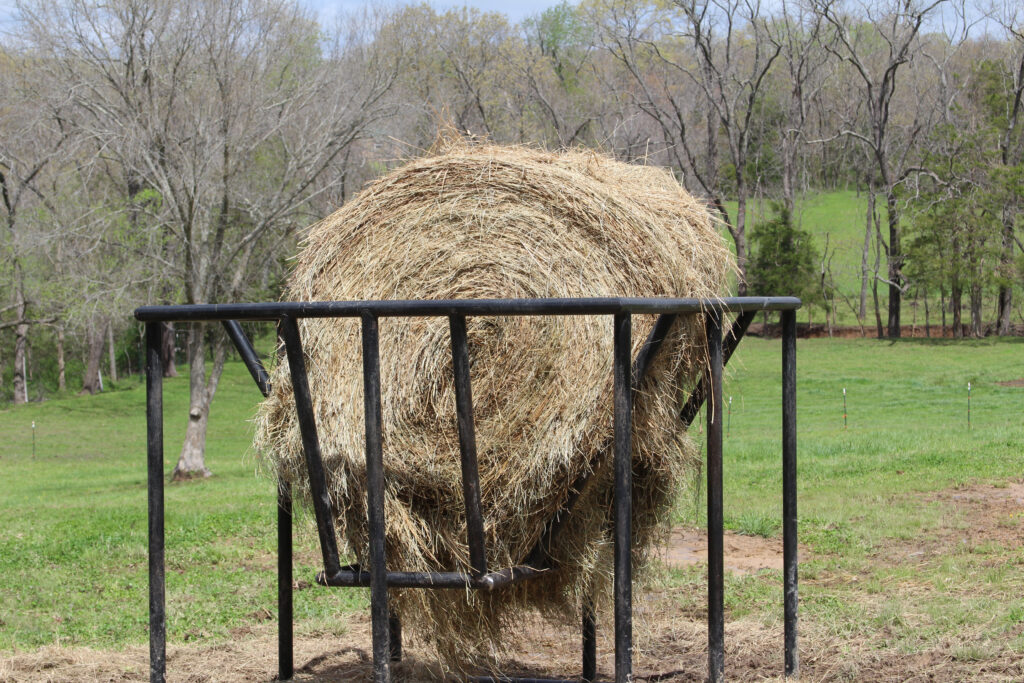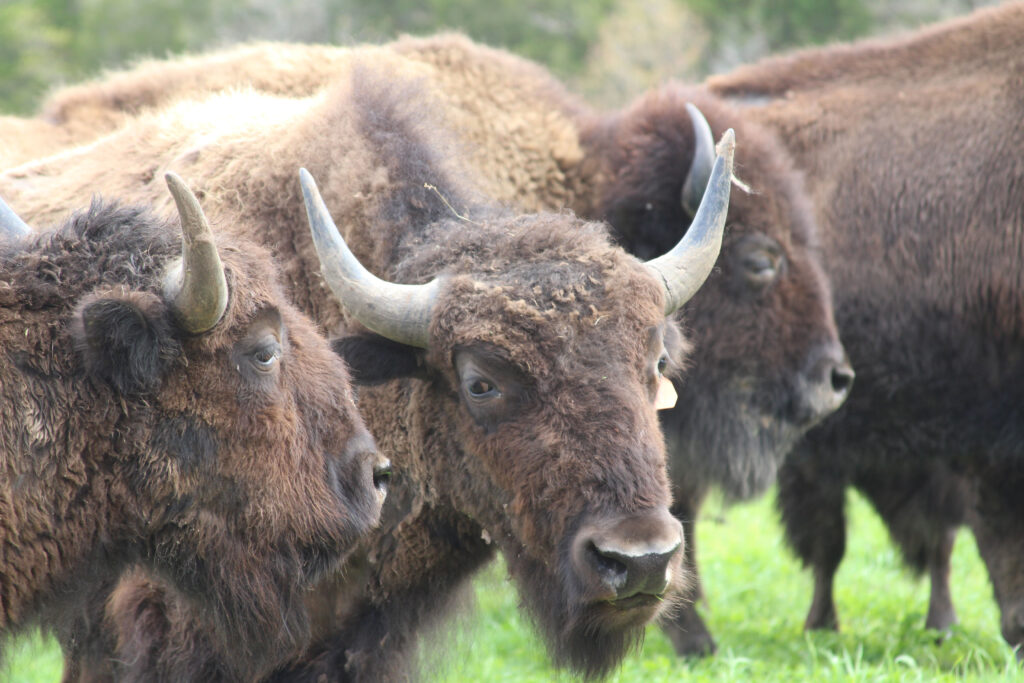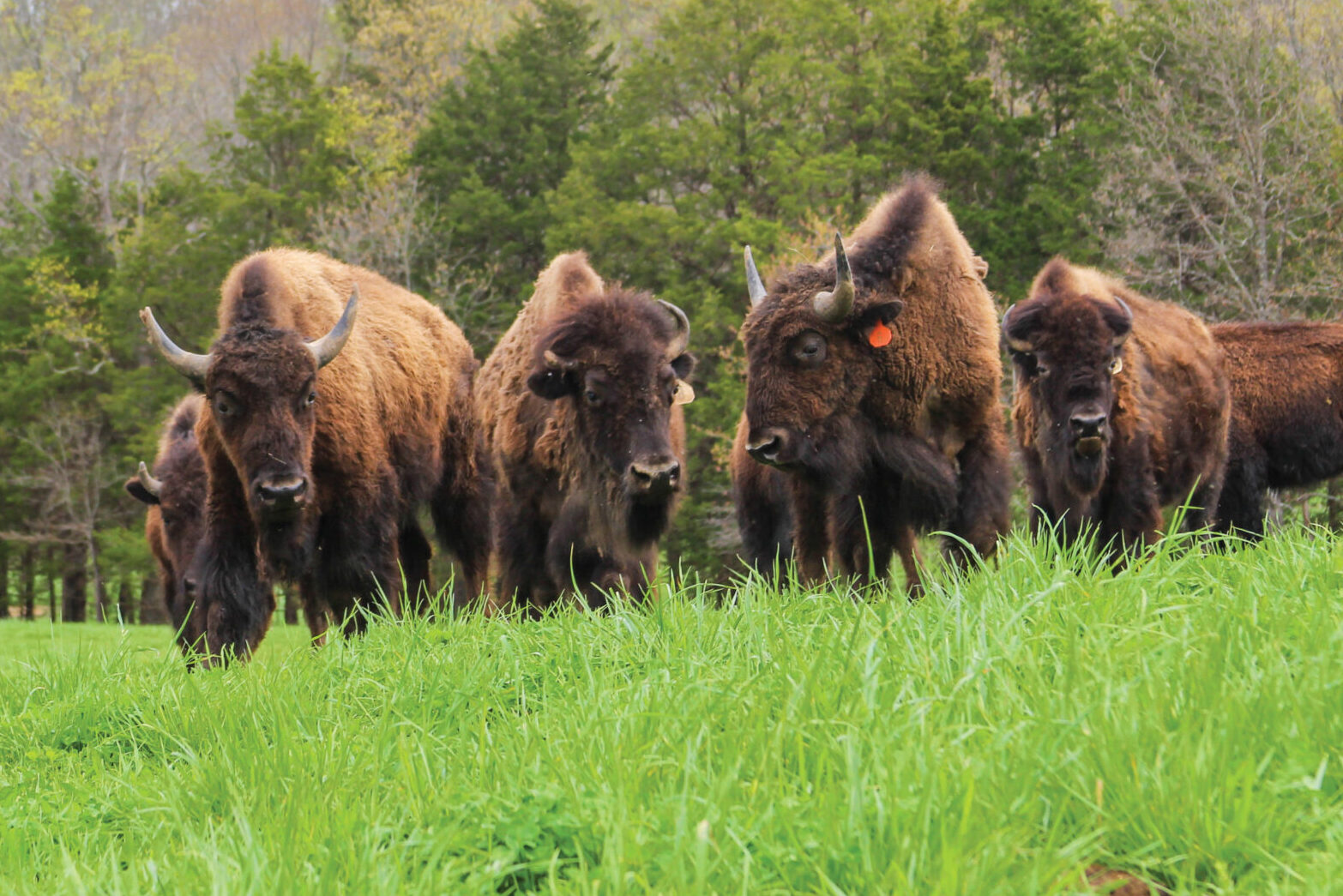
From Bombs to Bison
June 7, 2025
Written By Adam Buckallew
A Veteran’s Second Act
The massive bull could have charged at any moment.
Anyone familiar with American bison knows it’s best to keep your distance. A full-grown bull weighs up to a ton and can run three times faster than the average human. These aren’t domesticated animals—they’re the living descendants of the massive herds that once thundered across the Great Plains and the largest land mammals in North America. Muscle-bound and horned, bison are not to be taken lightly.
But C.J. Gallen, a seasoned Navy bomb technician who had faced peril countless times during his 23-year military career, wasn’t thinking about danger that day in Montana while visiting a buddy. Against his friend’s warnings, and with a bit of liquid courage, he extended his hand over the fence toward the bull.
“I turned to say something to my friend,” C.J. recalls. “When I looked back, the bull’s head was right there in my hand, nuzzling me.”
That unlikely moment of connection in 2016 would completely rewrite the retirement plans of a man who had spent decades defusing explosives, “from pipe bombs all the way up to nukes.”
“Right then, I knew,” he says. “That’s what I wanted to do.”
Today, C.J. runs Cedar Stone Bison in Lenox, Mo., where he’s developed a special bond with his small herd.
“Most producers have bigger herds and don’t have the same relationship that we do with our bison,” explains Tina, C.J.’s wife of nearly 30 years. “What we have here is special.”
Bonds of Trust
C.J. spent his Navy career in the high-stakes world of explosive ordnance disposal. He dove nearly 300 feet into the Arabian Sea to handle underwater threats. He parachuted from 27,500 feet. He earned a master’s degree in terrorism with a concentration on weapons of mass destruction.
The hands that once handled explosives such as sea mines and torpedoes now gently stroke the woolly body of a bison heifer. C.J. moves among his herd with ease. “It’s about familiarity and mutual respect,” he explains as he confidently strides through emerald pastures bursting with fresh growth. The bond he’s formed isn’t accidental; it’s the product of years spent learning his herd’s body language, respecting their boundaries, and building trust with them from the days when they were calves.
As the bison move unhurriedly through a verdant buffet of grass, their contentment is evident in their leisurely pace and the occasional soft guttural grunt. As they graze, their hooves leave temporary impressions in the earth softened by nearly 20 inches of April rain. The tree line bordering the pasture shows its own signs of interaction with the giants of the plains. The lower trunks of many cedars bear a distinctive “bison line,” a horizontal boundary about six feet high where branches and bark remain intact above but are noticeably absent below. Wisps of shaggy brown winter coats cling to the trunks where the animals have rubbed themselves in their seasonal shedding ritual.
C.J. and Tina have been living their dreams as bison ranchers since December 22, 2018, when their first six bison calves arrived—one bull and five heifers, all about six months old.
“We chose young animals because we wanted to learn as they learned,” C.J. explains. “We wanted to grow together.”
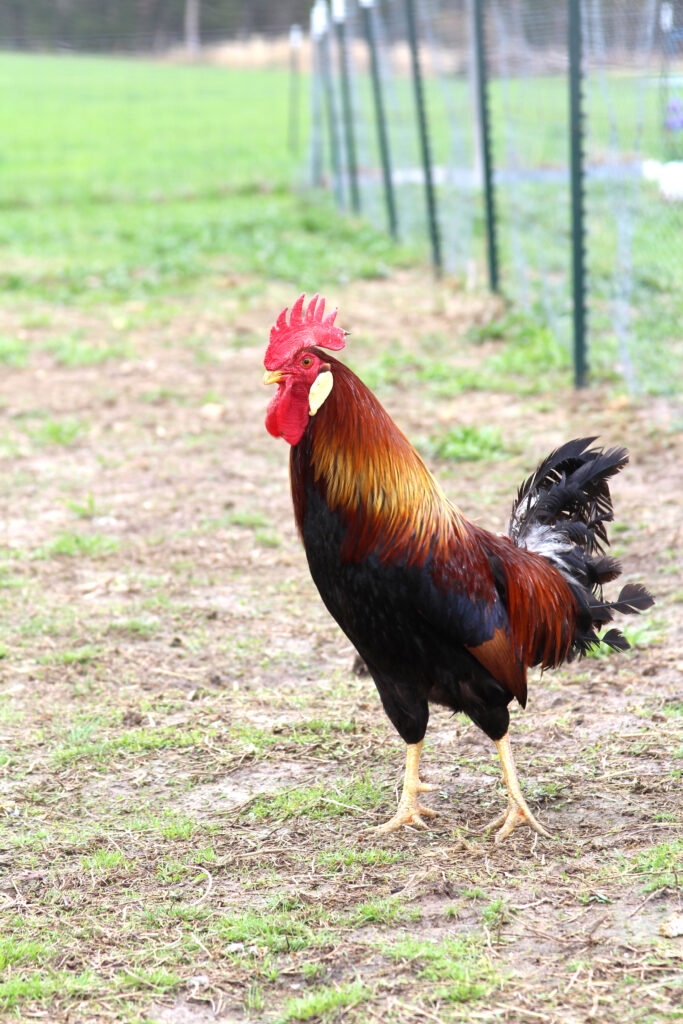
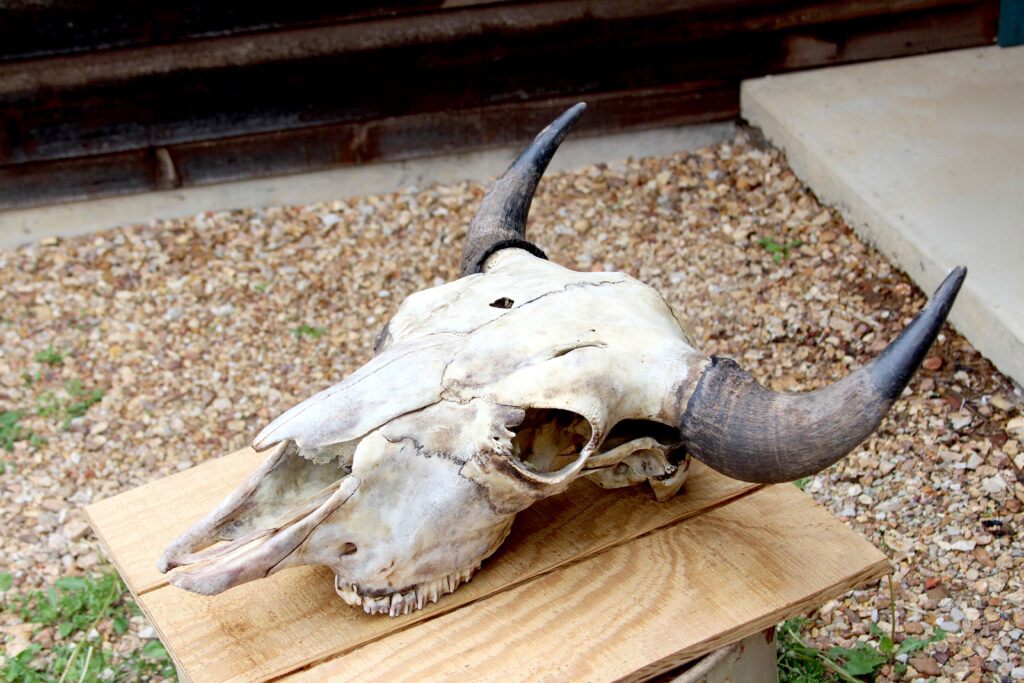
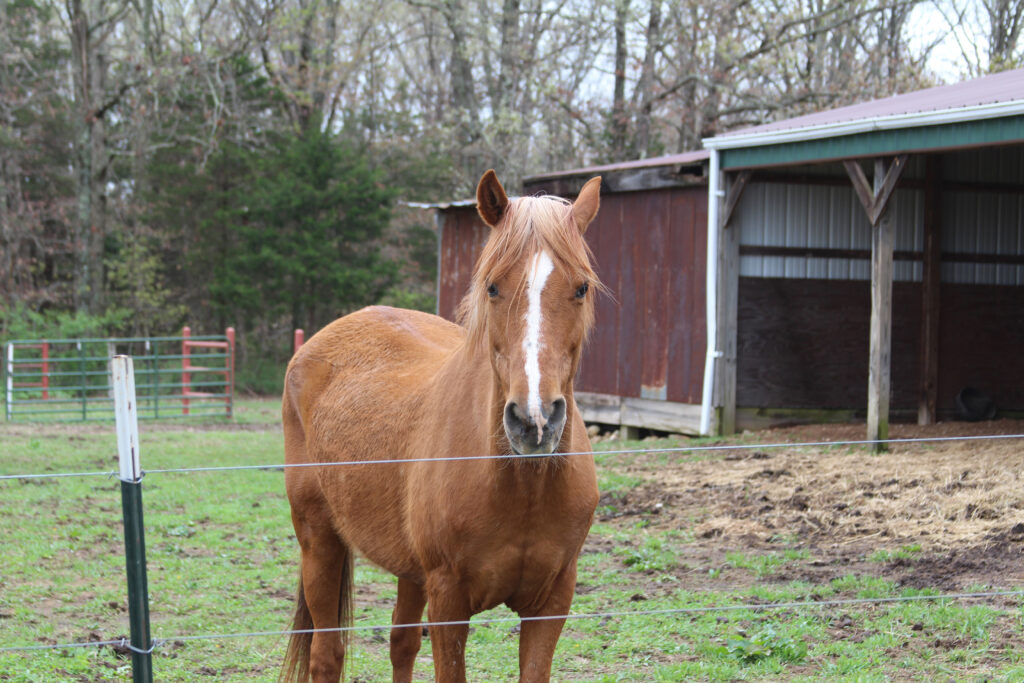
Putting Down Roots
The Gallens lived in the high desert of California at China Lake Naval Air Weapons Station, until a job as a military contractor brought them to Missouri. The couple fell in love with the rolling green hills near Lenox, Mo., where they found a property that fit their needs. The 117-acre parcel of land had plenty of room to raise bison and represented something C.J. had never truly had before—permanence.
“When you grow up as a military brat and then serve for over two decades, you’re always moving,” he explains while gazing over his pastures and the cedar groves encircling his property. “This isn’t just a ranch. We’re building something here—something we can pass on to our kids and grandkids.”
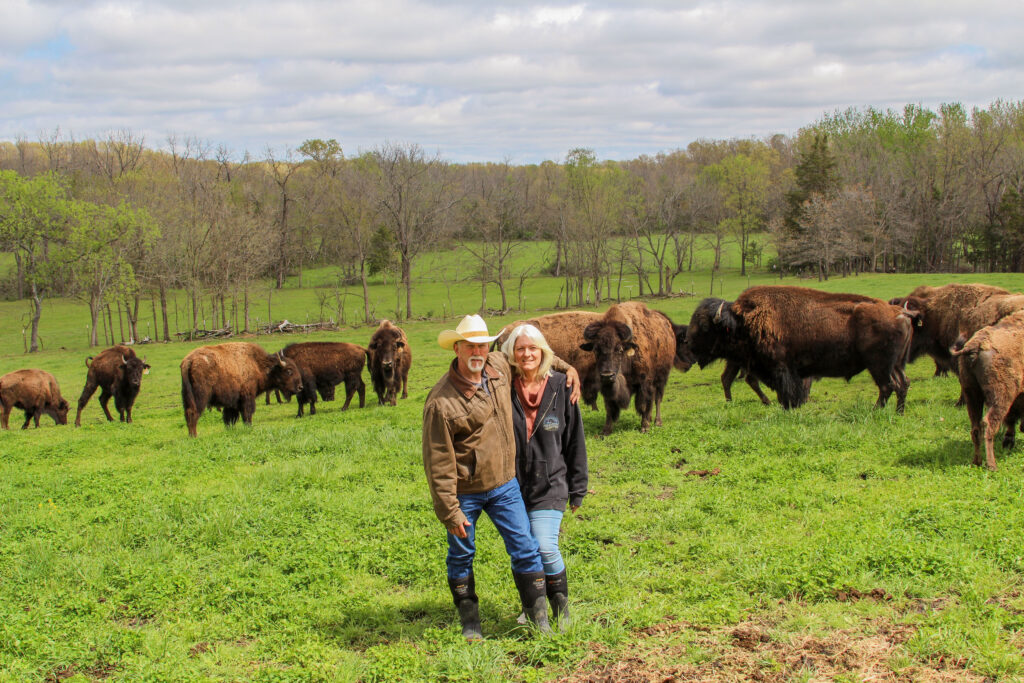
Though the previous owners tried to dissuade them from making the purchase, the Gallens were undeterred. “They didn’t think we could handle it,” C.J. says with a knowing smile. “Obviously, they didn’t know me. When I set my mind to something, it gets done.”
C.J. and Tina closed on the property in August 2017 and immediately began preparing it for bison. The property came with a name already etched on a sign: Cedar Stone. The Gallens initially took the sign down, planning to rename the ranch. But after spending a year working the land, they had a realization.
“We kept running into cedars and plenty of rocks,” C.J. says, chuckling. “We decided the name would stay. There was also a lot of poison ivy, but we didn’t think we could work all three into the name.”
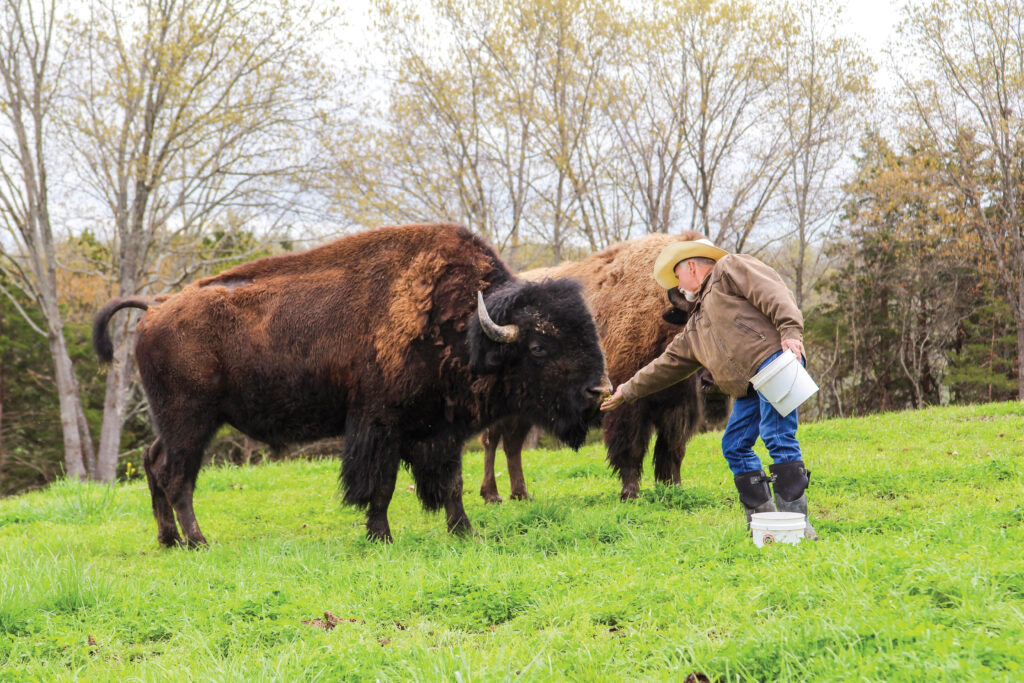
Built for Bison
There was a full year of work to be done before the bison arrived: clearing fence lines, installing reinforced fencing and establishing a watering system. While clearing an area under a tree, C.J. discovered a hidden treasure: a 96-foot-deep, hand-stacked rock well that predates the Civil War.
“We tested the refresh rate and water quality and found it was good,” C.J. says. The historic well now supplies water exclusively for ranch use, where it’s filtered and UV-sterilized before being delivered to the herd. A separate well provides water for the home. Two solar arrays—one for the house and another for the water system—help power the operation, with battery backups for cloudy days.
What began as one large open pasture gradually transformed as the Gallens implemented rotational grazing techniques. C.J. has strategically cross-fenced his pastures into eight sections, which the bison will graze for a couple of days—or until the grass reaches about 4 inches in height—before moving to fresh growth.
Across the ranch, bison-proof fencing, hay feeders and a custom-built handling system are made of reinforced steel to withstand the strength of bulls, which can weigh up to 2,000 pounds.
“You don’t see these on a cattle ranch because they aren’t needed,” C.J. says, pointing to the crash gate at the end of his handling chute. “Bison are far more athletic than cattle. We discovered the hard way that they’ll smash through standard equipment.”
Finding a Niche
The business remains intentionally small-scale to preserve the unique relationship the Gallens share with their herd. They maintain about 30 bison throughout most of the year.
That choice has proven pivotal. The manageable herd size allows the Gallens to know their bison well and vice versa. “We’ve known each other since they were all babies,” Tina says.
That uncommon connection has allowed the couple to raise even-tempered calves prized for their calm demeanor and distinctive dark coats. The Gallen’s bull, Atlas, serves as the foundation for the couple’s breeding program, siring plenty of calves. The bull’s fur, reminiscent of burnished mahogany, has become a genetic hallmark, passing similar shades of coloring to his progeny.
Some of the bison are sold at auction, a few are raised for meat processing and the others are used to create “starter herds” for prospective ranchers. The Gallens provide six animals per starter herd, working with a partner in Mountain Grove, Mo., to ensure genetic diversity.
“We help new ranchers get into the business,” C.J. says. He’s delivered two starter herds so far and already has a buyer lined up for his next set of calves.
To prepare the animals, C.J. groups them together to teach them to become a “cohesive unit.” He personally delivers the calves to their new homes, typically around the first week of December. The service doesn’t end with delivery—C.J. provides ongoing mentorship to new owners.
“They can call and ask any questions,” he says. “We want them to be successful.”
The Future
In the next couple of years, the Gallens hope to open a ranch store selling bison meat, eggs from their 27 chickens, homemade jellies and jams, and bison byproducts like hides and skulls.
There also will be more Gallens available to lend a hand in the near future. Two of the couple’s three adult children plan to move onto the ranch, reinforcing their hope that the property will be home to future generations.
“We’re a family-owned operation—we’re nothing big,” C.J. says while reflecting on what he and Tina have built together. “There’s been ups and downs, but it’s been fun, and we’ve learned so much.”
To outsiders, ranch life may seem quaint compared to defusing bombs for a living and diving into dangerous waters. But watching C.J. move among those majestic creatures—confident, respectful and completely at home—it’s clear he’s landed exactly where he’s meant to be.




